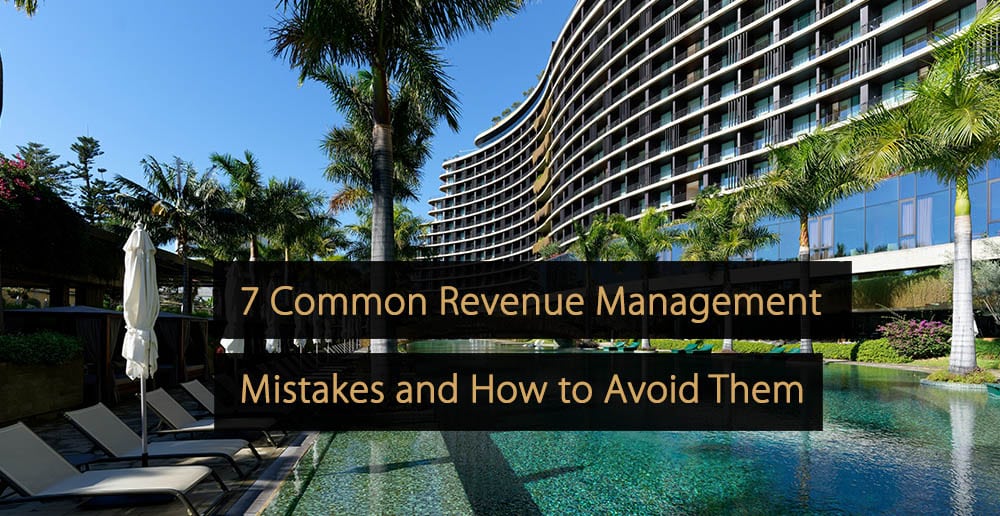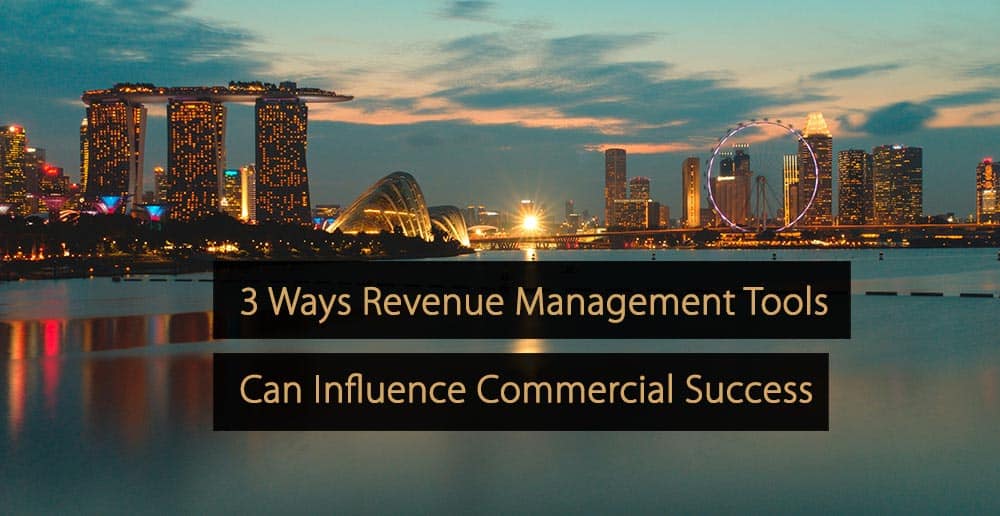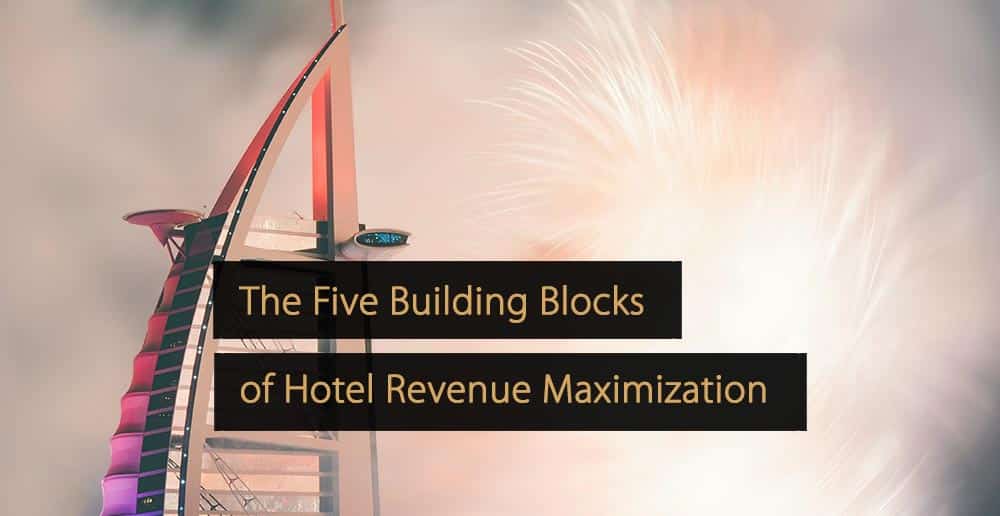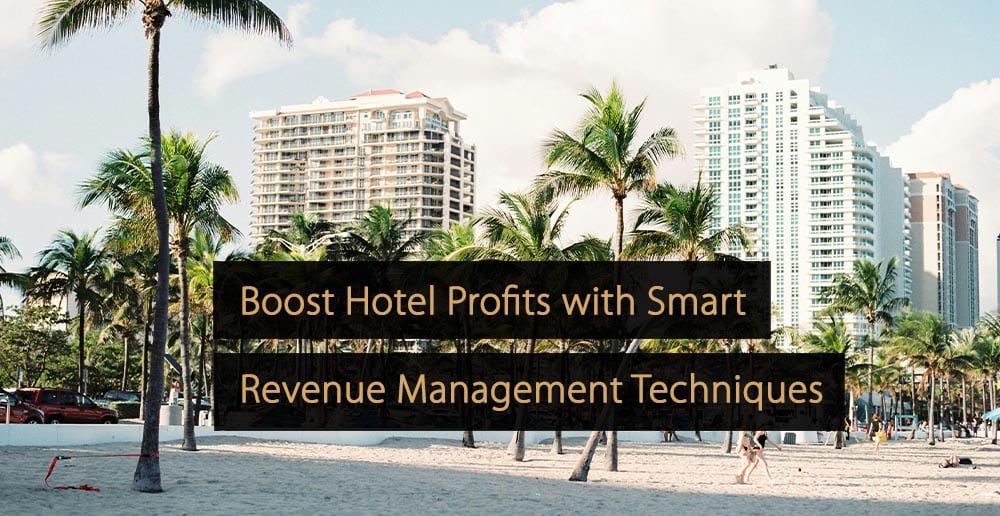Imagine a well-located boutique hotel. The guests enjoy themselves, and while it’s slow, it is low season. However, as high season approaches, many rooms remain empty while other nearby properties fill.
What’s Making Nearby Hotels More Attractive?
On the surface, there’s no obvious reason why guests are choosing the competition. A little sleuthing shows that these hotels use dynamic pricing and have had many favorable reviews. The reviews boost the property’s brand reputation and visibility on search engines, translating into higher rates that customers are happy to pay.
Dynamic pricing and recent reviews are only two ways hotels use revenue management to increase their profits. True revenue management principles weave throughout every aspect of the hotel to increase profitability.
Boosting hotel profitability through revenue management often comes with common psychological and cultural misconceptions.
7 Hotel Revenue Management Mistakes
Here are seven of the most common misunderstandings.
The Franco Grasso Revenue Team (FGRT) has worked with over 2500 properties in 30+ countries and found every hotel that implements revenue management increases its profits and revenue. Based on the company’s data, the following misconceptions are the most common revenue management mistakes that can lead to significant revenue loss for hotels.
Mistake #1: Ignoring the Connection Between Sales and Service
Some hoteliers want to slash spending to increase revenue. While this might sound useful initially, reducing staff or other means of saving can impact service, leading to unfavorable online reviews, which means potential customers will book elsewhere.
Hotel profitability requires a constant eye on balancing complex and variable costs with creating a positive experience for your guests.
Hotels offer multiple ways to grow revenue.
For example, consider group sales. Make it a habit to review group contracts to ensure they’re still cost-effective. There’s no reason to promise group sales at a sharp discount during the busy season if you could book those rooms at a higher rate.
You could promote ancillary revenue through activities or F&B or offer personalized marketing to thrill guests with enjoyable experiences they want to share.
Please your guests and encourage them to leave a review. Soon, your hotel will benefit from the “billboard effect,” where guests discover your hotel through an OTA and book directly.
Mistake #2: Treating Hotels as an Easy Business
Before opening a new property, hoteliers must explore the revenue management implications or risk significant financial loss. The core philosophy of FGRT is to align the hotel with the market.
Running a hotel is a complex business that requires a strong management and operations focus to achieve and maintain profitability. Some hoteliers consider themselves “unlucky,” but often, these so-called “unlucky” hotel owners build business plans focused on obtaining banking benefits and lack feasibility plans.
Profitable hoteliers conduct competitor analysis and do fundamental studies on the feasibility of opening a new hotel. Parameters such as the relationships between the rooms and possible income and potential ancillary revenue are just a few avenues of hotel profits to explore.
New hoteliers often want to link their business and rates to their “wishes” regarding revenue and performance rather than what the market wants. This can lead to hoteliers pricing rooms too high to the market expectations, leaving those rooms unsold.
It’s essential to understand the market before pricing rooms. When hoteliers use objective data like REVPAR (revenue per available room, average income calculated in both rooms sold and unsold), they can benchmark their hotel’s profitability potential, track rates over time, and price appropriate to the market.
Mistake #3: Resistance to Change
Hoteliers who refuse to evolve are at a disadvantage. Today’s hotel management practices are quite different from the ones of twenty years ago.
Technologically speaking, today’s guests expect online bookings and fast wifi when they arrive.
Just like guests, revenue managers rely on technology to make smart decisions. From automating reports to improved forecasting ability, a revenue management system frees revenue managers to focus on making strategic decisions that grow profits.
Technology aside, three questions drive revenue and profits.
- Does price condition demand?
- Are price and quality always equal?
- Must fixed costs affect a sales price?
Many hoteliers misunderstand the basics of revenue management. One proven principle sells rooms at a low rate months before the high season. But that’s only a sliver of the revenue management philosophy.
Many hoteliers who are new to this idea resist this concept. They say things like, “I can’t make it on these rates! My room costs are too high!” Or “What if everyone does this? The place will be full of riff-raff!”
Removing these psychological resistances is the first step for efficient modern revenue management applications. Revenue management uses dynamic pricing that responds to market conditions. It’s data-based, not “gut-based,” and if a room rate looks low this week, that is an intentional rate that can triple or quadruple in a few weeks because the hotel has implemented revenue management and done the right things to naturally increase rates later.
Successful hoteliers invest in proper training, implement efficient business processes with up-to-date technology, and stay current with industry trends, including revenue management.
Mistake #4: Focusing on Discounts
A discount is an old sales tactic that assumes there’s a fixed price. Hotel rooms are not fixed in price; they’re based on demand.
There’s no need to offer discounts if there’s enough interest in the region and the hotel has a strong brand reputation. Instead, hoteliers can use proven revenue management principles (and an RMS) to set a correct starting rate and use dynamic pricing. That way, the analysis and software use past data and current marketing trends to set higher prices during peak demand.
This Italian hotel doubled revenue and cracked TripAdvisor’s Top 10 by leveraging revenue management principles. Others have sold rooms at triple or quadruple the usual rates.
Mistake #5: Believing Price and Quality Always Go Together
Do higher prices always equate to higher quality? Not always. Yet many hoteliers who came of age in the days before the ubiquitous online world still think this way.
In the modern age, everyone can access the internet and leave reviews. Negative reviews can impact future customers. Additionally, just because guests are dressed down and paid a low rate for the room, that doesn’t mean they aren’t polite and appreciative.
Such guests can leave a favorable online review which drives future bookings at higher rates in high season.
On the other hand, incorrect pricing can lead to spillage, spoilage, and overbooking, which can destroy your hotel profitability.
Mistake #6: Believing Fixed Costs Impact the Sales Price?
Dr. Grasso has found many hoteliers speak about income on a single-focused way. “But do you know how much I pay a year, just on electricity?”
Such comments show a willingness to compare apples to pears instead of recognizing reality.
Here’s why. In the above example, if a hotelier thinks of their costs as an absolute value e.g., the electricity bill accounts for 30,000 Euros a year. Yet, when it comes to room prices they think in unitary values. So they think pricing a room at $99 Euros is too low.
However, it doesn’t make sense to compare absolute costs, such as the annual electricity costs, to the individual unit of a room. Instead, break the costs down to the unitary level so you’re comparing the apples to apples.
Here’s an example.
Once in a Roman five-star hotel, Dr. Grasso attended a discussion on the possibility of accepting a group of 30 empty rooms full for a year at 130 euro instead of the 150 euro they had paid up to then. The shift manager listed all the costs the hotel had to sustain over the year and concluded it was not convenient for them to accept less than 140 Euro.
This seemed surprising, considering this hotel didn’t pass 70% in annual occupancy. Ultimately, the unsold rooms brought in zero while the variable costs were between 15 and 20 Euro.
Imagine the hotel has 100 rooms. The fixed costs are at 1,000,000 Euro and the rooms have a 15 Euro variable cost. This variable cost includes toiletries, breakfast, etc. Divide the million Euro by 365 and then by 100 (rooms), for 27.40 Euro. This is the negative value a single room has for the hotel.
Now imagine selling that room at 50 Euro, subtracting the 15 Euro variable costs per room per night, and 7.6 Euro are left over. This can go to profits or amortize the fixed costs of unsold rooms.
Hotel rooms are perishable inventory and empty rooms are lost profit opportunities. Yes, it’s essential to consider fixed and variable costs in revenue management but there are often other opportunities to generate revenue.
Mistake #7: Putting Too Much Trust in the Uniqueness of the Property
After working with more than 2500 properties, it’s fascinating to see how similar their requirements and concerns are, and yet, each hotelier is certain THEIR property is the outlier.
Of course, the property is unique. But that doesn’t mean proven business practices won’t work. Over twenty years of revenue management experience proves every property that implements these principles experiences a lift in profits and revenue.
Market conditions, guest preferences, and area competition change over time. Yet, practicing revenue management ensures the property stays competitive by selling rooms at variable rates throughout the year based on market demand.
Hoteliers can maximize profitability and stay competitive by avoiding these common revenue management mistakes. Take action today – leverage data-driven strategies, refine pricing, and optimize demand. Every informed decision brings you closer to sustained revenue growth and long-term success in the hospitality industry.
Free Guide: 10 Things To Know About Revenue Management
Hotel Revenue Management is an innovative economic discipline that involves the harmonious and integrated use of sales channels, distribution strategies and market-oriented dynamic pricing to obtain the highest profits possible from each hotel.
This ebook is an introduction to revenue management for executives, general managers and hotel owners. Within the ebook “10 Things To Know About Revenue Management”, you’ll learn the principals of revenue management.
Click here to download the Guide “10 Things To Know About Revenue Management”.
More Tips to Grow Your Business
Revfine.com is the leading knowledge platform for the hospitality and travel industry. Professionals use our insights, strategies, and actionable tips to get inspired, optimize revenue, innovate processes, and improve customer experience.Explore expert advice on management, marketing, revenue management, operations, software, and technology in our dedicated Hotel, Hospitality, and Travel & Tourism categories.








Leave A Comment